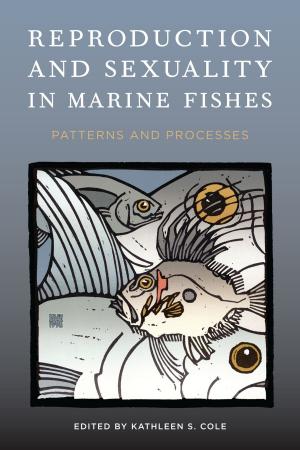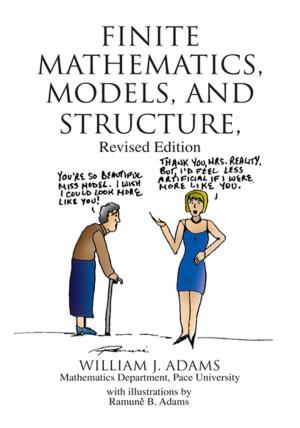| Author: | W. F. Owen | ISBN: | 9781452473109 |
| Publisher: | W. F. Owen | Publication: | June 26, 2010 |
| Imprint: | Smashwords Edition | Language: | English |
| Author: | W. F. Owen |
| ISBN: | 9781452473109 |
| Publisher: | W. F. Owen |
| Publication: | June 26, 2010 |
| Imprint: | Smashwords Edition |
| Language: | English |
This book is part anthology of many of my best poems, part instructional guide especially for beginning haiku writers and part short stories or haibun to contextualize the poems. Of course, you can look at the full sample offered, but here is a brief passage from the book:
Growing up, many friends carried good luck objects in their pockets. One had a lucky penny, another had a rabbit’s foot and another packed a small wrench his mechanic dad gave him. As if to compete, some boys had pocketknives and one had a small nail clipper attached by a small metal chain to the belt loop of his Levi’s. I never saw him cut his nails. A red-haired kid carried a bent-up photo of his dad who had died in a car accident. I didn’t understand that at the time, but I wanted to be different, too. I decided to carry the foot from a squirrel I had shot. These objects were like friends that kept us company and preserved connections to people.
a young woman at the Wall dog tags in her hand
The only thing I kept when my mom died was the lucky Kennedy half-dollar I had given her to use on scratcher tickets. I didn’t want to say I wanted anything. Other coins continued to give comfort for a while longer.
her estate dividing the children
And, another excerpt:
Starting and developing relationships. Whether the first love or re-marrying for the third time, the ways people form personal relationships is intriguing. In these modern days, people meet online, through personal ads and, of course, the old-fashioned way, in face-to-face interaction. These may be seen as moments of awareness for self and others.
the personals blushing as she reads her own
morning after her date retrieving the personals
vapor rises from the fence I try to forget her
And, on those dates, especially first dates, who among us has not felt uncomfortable moments?
waiting in line for the ballet we shift our feet
In a more instructional vein, I recommend these factors:
1. Haiku are one-breath poems probably less than 17 syllables (usually about 10-12).
2. Have a season word (called a kigo). Usually only one season word per poem is used. This should make sense because your poem is about a moment of your awareness.
3. Limit adjectives, adverbs and any words not essential. However, if the poem sounds stilted or weird without a “the” or “a,” use those words.
4. Show, don’t tell. Telling is explaining or interpreting an image(s) or moment. Present the moment and leave the final interpretation(s) to readers.
5. Do not be afraid to include the human factor. We are part of nature, remember?
6. Work for tension between two images. This is the tricky part. Recall that I used the rubber band metaphor above. If the two things you are comparing are too close to the same, there is no tension for readers to resolve, complete or extend. If you stretch the association between the images, the haiku is too far-fetched or unreal. Practice will help.
7. Start out trying to write a poem a day. Of course, some haiku will be bad—we ALL write those! Leave the poems for a week or so, then give them a new look.
8. In your reading, you will notice some haiku appeal to you more than others. Ask yourself why? Adopt that poet’s style for a bit. No, I do not mean copy that haiku poet (called a haijin in Japanese). But, it can help you ground yourself in an acceptable style.
Good luck and thank you for reading my book!
This book is part anthology of many of my best poems, part instructional guide especially for beginning haiku writers and part short stories or haibun to contextualize the poems. Of course, you can look at the full sample offered, but here is a brief passage from the book:
Growing up, many friends carried good luck objects in their pockets. One had a lucky penny, another had a rabbit’s foot and another packed a small wrench his mechanic dad gave him. As if to compete, some boys had pocketknives and one had a small nail clipper attached by a small metal chain to the belt loop of his Levi’s. I never saw him cut his nails. A red-haired kid carried a bent-up photo of his dad who had died in a car accident. I didn’t understand that at the time, but I wanted to be different, too. I decided to carry the foot from a squirrel I had shot. These objects were like friends that kept us company and preserved connections to people.
a young woman at the Wall dog tags in her hand
The only thing I kept when my mom died was the lucky Kennedy half-dollar I had given her to use on scratcher tickets. I didn’t want to say I wanted anything. Other coins continued to give comfort for a while longer.
her estate dividing the children
And, another excerpt:
Starting and developing relationships. Whether the first love or re-marrying for the third time, the ways people form personal relationships is intriguing. In these modern days, people meet online, through personal ads and, of course, the old-fashioned way, in face-to-face interaction. These may be seen as moments of awareness for self and others.
the personals blushing as she reads her own
morning after her date retrieving the personals
vapor rises from the fence I try to forget her
And, on those dates, especially first dates, who among us has not felt uncomfortable moments?
waiting in line for the ballet we shift our feet
In a more instructional vein, I recommend these factors:
1. Haiku are one-breath poems probably less than 17 syllables (usually about 10-12).
2. Have a season word (called a kigo). Usually only one season word per poem is used. This should make sense because your poem is about a moment of your awareness.
3. Limit adjectives, adverbs and any words not essential. However, if the poem sounds stilted or weird without a “the” or “a,” use those words.
4. Show, don’t tell. Telling is explaining or interpreting an image(s) or moment. Present the moment and leave the final interpretation(s) to readers.
5. Do not be afraid to include the human factor. We are part of nature, remember?
6. Work for tension between two images. This is the tricky part. Recall that I used the rubber band metaphor above. If the two things you are comparing are too close to the same, there is no tension for readers to resolve, complete or extend. If you stretch the association between the images, the haiku is too far-fetched or unreal. Practice will help.
7. Start out trying to write a poem a day. Of course, some haiku will be bad—we ALL write those! Leave the poems for a week or so, then give them a new look.
8. In your reading, you will notice some haiku appeal to you more than others. Ask yourself why? Adopt that poet’s style for a bit. No, I do not mean copy that haiku poet (called a haijin in Japanese). But, it can help you ground yourself in an acceptable style.
Good luck and thank you for reading my book!















